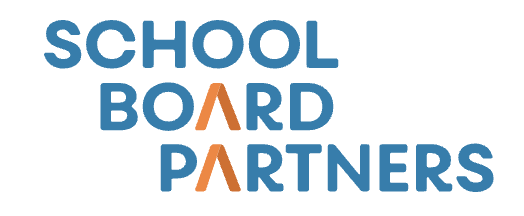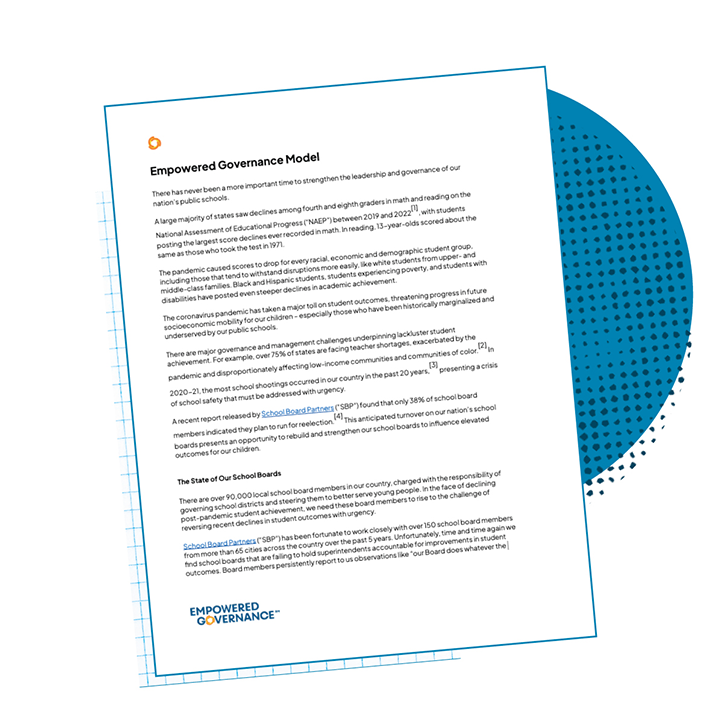Policy Toolkit
Superintendent Evaluation
The Superintendent evaluation is an opportunity to define the Board’s expectations, enhance clarity of communication, foster a positive working relationship between the Board and Superintendent, provide feedback and support for the Superintendent’s professional growth, and focus on the critical responsibility of improving educational outcomes for all students. (Developed in partnership with Ben Kleban Consulting)
Superintendent Evaluation in Chesterfield, Virginia
Chesterfield County Public Schools in Virginia includes 69 schools and serves over 60,000 students, 60% of whom are students of color. Upon her election, Kathryn Haines, the Board’s Vice Chair, recognized a need to increase the focus on results for students in the district. She identified an early opportunity to bring this focus to an area of responsibility squarely within the role of the Board - superintendent evaluation. Previous evaluations were conducted primarily through qualitative impressions of leadership competencies rather than student outcomes.
Superintendent Evaluation Improvements from Antonia Watts
Antonia Watts, SBP Cohort 4, Board Member, Howard County Public Schools (Maryland), Chair in 2023. The district includes 77 schools and serves over 57,000 students. 70% of students of color.
Ms. Watts spearheaded dramatic improvements to her district’s superintendent evaluation process in 2022-2023. In the prior year (2020-21), the superintendent evaluation was a 45-page narrative completed laboriously by the Superintendent and staff. The document was primarily a report on various qualitative accomplishments, but it was not clearly rooted in the achievement of measurable goals for improved student learning, nor did it represent substantive input of board members themselves.
Research, Data, Evidence
Superintendent Evaluations Are Murky, Incomplete, Unfocused. Caitlynn Peetz, Education Week. (2023)
A survey of 2,400 superintendents by The School Superintendents Association found that good processes keep the superintendent and school board focused on district goals. Read MoreSuperintendent evaluation and other influences on the school board and superintendent relationship: Measuring strength of relationship. Sara A. Duvall. (2005)
Data driven superintendent evaluation (as opposed to global or judgment) increased the strength of the board-superintendent relationship, resulting in higher student achievement. Read MoreSchool boards circa 2010: Governance in the accountability era.
Frederick M. Hess, Olivia Meeks. (2010)
A nationwide survey of board members and superintendents identified financial management, student achievement, and meeting goals as important factors in the evaluation of superintendents. Over 90 percent of board members in this study identified these as very or extremely important in superintendent evaluations. Read MoreSchool District Leadership that Works. J. Timothy Waters and Robert J. Marzano. (2006)
Researchers found significant correlation with student achievement when boards align and support non-negotiable goals for achievement and instruction, and those goals remain the primary focus of the district and board’s work. Read MoreGetting There from Here. Richard H. Goodman, Luann Fulbright, William G. Zimmerman. (1997)
Researchers found a common characteristic of high achieving districts was regular retreats by senior staff and board members for evaluation and goal setting purposes. Read More
Toolkit Partner
This toolkit was created in partnership with Ben Kleban Consulting
Don't Know Where to Start?
Are you driven by a passion to create change? Do you have skills, ideas, and energy to contribute? We're inviting you to be a part of our dynamic team where innovation thrives and impact is tangible.




